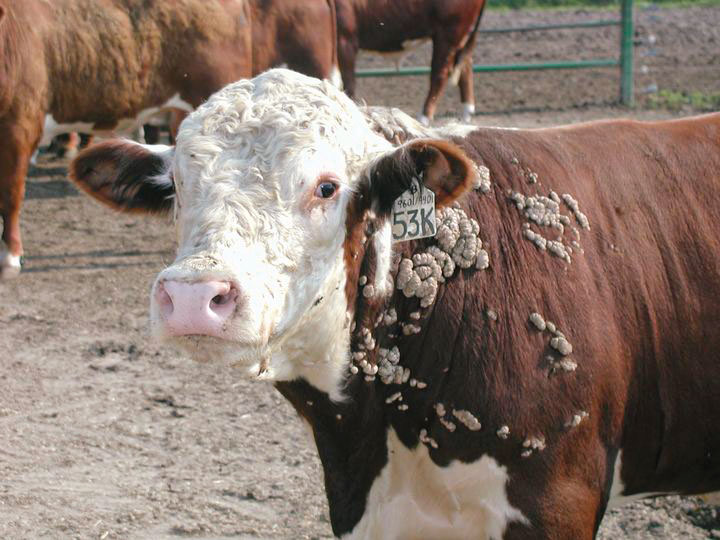
The virus is contagious and should be treated
While skin health issues in cattle are not the most pleasant subject to think about, it pays for producers to be vigilant and aware in the event that something like a case of warts comes along.
Cattle warts are painful and contagious, and if they show up in the herd, care should be taken to control and prevent the spread.
Cattle warts are caused by a virus known as Bovine Papillomavirus, Dr. Craig Payne, University of Missouri Extension Veterinarian, explained. There are several strains of the virus with each causing lesions on specific parts of the body. Common locations for warts to appear are the head, neck, shoulders and brisket of an animal. They can also show up on the penis, vaginal mucosa, teats and other areas, although this tends to be less common. Dr. Payne noted warts tend to occur more in younger cattle.
Warts are contagious, unfortunately. Payne explained transmission most often occurs through direct contact, such as skin-to-skin contact of an infected animal with an uninfected animal, or through indirect methods, such as an uninfected animal being exposed to a surface contaminated with the virus like feeders, waterers, halters and other equipment.
The virus cannot actively penetrate the skin, he went on to say, so skin abrasions are needed for viral entrance and infection to occur. Warts may not appear right away. Time from exposure to the appearance of warts is reported to be several weeks to months, but when they do, they appear as an outgrowth from the surface of the body part and they typically have a rough surface.
The number and size of the warts will vary.
“Warts may spontaneously regress if given enough time,” Payne said. “However, when treatment is desired, it usually consists of either surgically removing, freezing, or crushing warts. The irritation caused by these procedures can also stimulate a host immune response, which may prevent further warts from developing and may aid in the regression of any remaining warts.”
There is a wart vaccine available, and an immunostimulant is also a treatment option. The herd veterinarian can advise producers on the best course of action should warts occur.
Payne advised minimizing further spread through eliminating potential routes of transmission, isolation of infected animals and thorough cleaning of contaminated objects/equipment, or using a wart vaccine as a preventative.
Since every situation is different, producers should work with the herd veterinarian to develop a prevention strategy.



